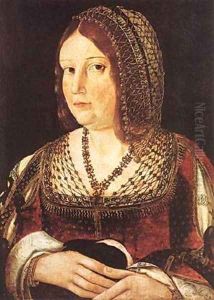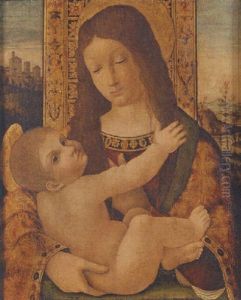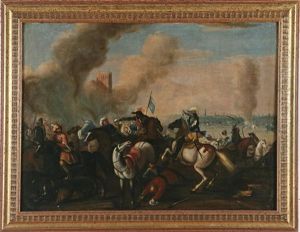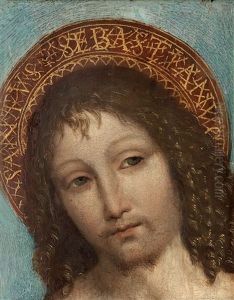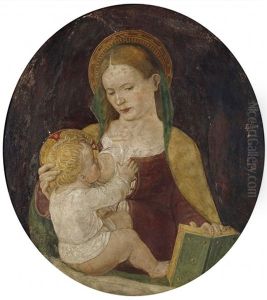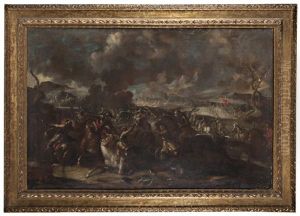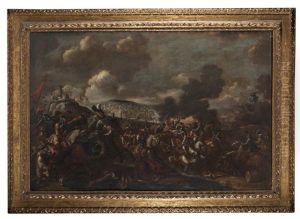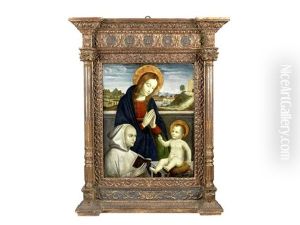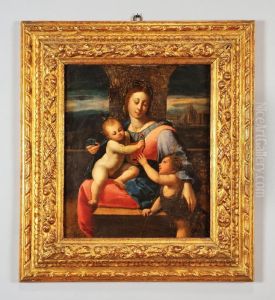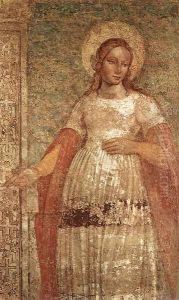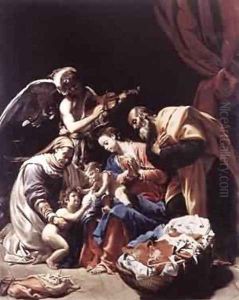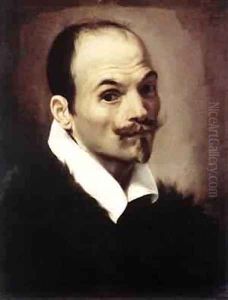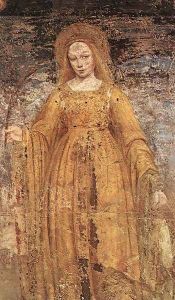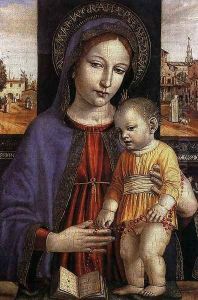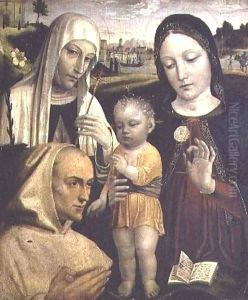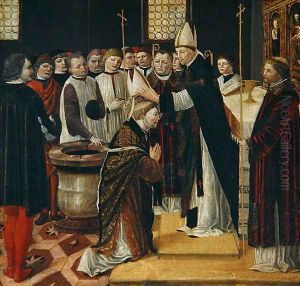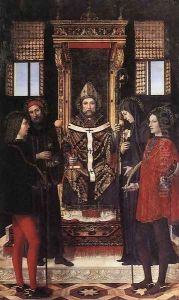Ambrogio Borgognone Paintings
Ambrogio Borgognone, whose real name is believed to be Ambrogio Stefani da Fossano, was an Italian painter of the Renaissance period active mainly in Milan and its surrounding areas. He is considered to be a significant figure in the Lombard school of painting, although not much is known about his early life and training. His birth and death dates are not precisely documented, but he is thought to have been born around 1453 and to have died around 1523.
Borgognone's style is characterized by its devotional intensity and attention to detail, reflecting the influence of the Northern European Renaissance as well as the more narrative and ornate Lombard tradition. His work displays a unique combination of these influences, resulting in paintings that are both delicate and expressive. He was particularly noted for his skill in depicting architectural elements and for his sensitive portrayal of religious subjects, often featuring serene and pious figures.
One of Borgognone's most significant contributions was to the Certosa di Pavia, a Carthusian monastery, where he executed a series of frescoes and altarpieces that are considered masterpieces of Lombard art. His work at the Certosa, which spanned several decades, includes the 'Marriage of St. Catherine,' 'The Dead Christ Supported by Two Angels,' and the 'Virgin and Child with Saints.' These works helped establish his reputation as a master painter.
Despite the high quality of his work, Borgognone did not achieve the same level of fame as some of his contemporaries, such as Leonardo da Vinci or Raphael. Nevertheless, his paintings are appreciated for their piety and craftsmanship and remain an important part of the cultural heritage of the Lombardy region.
Borgognone's legacy is also seen in his influence on other artists. His style was particularly impactful on the development of Lombard painting, and his techniques were emulated by subsequent generations of artists in the region. Today, Ambrogio Borgognone is recognized as an important artist of the Italian Renaissance whose work contributes to our understanding of the period's religious and artistic sensibilities.
